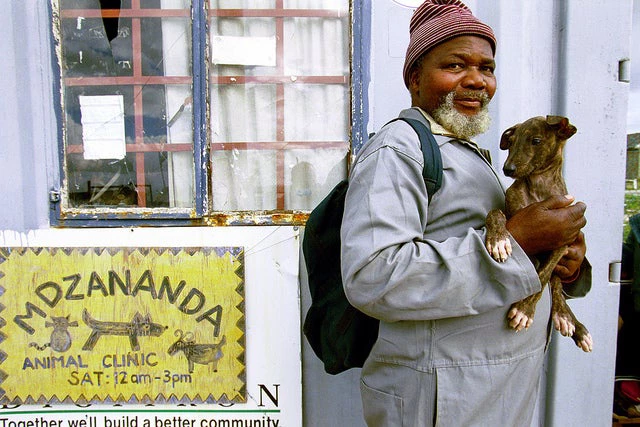
Like many, we were relieved to hear from the Government of Madagascar and WHO in November last year that the pulmonary plague outbreak in Madagascar had been contained. Plague is a disease caused by bacteria called Yersinia pestis that are typically transmitted by rodents through their fleas but can also be transmitted from human to human. Since the onset of the outbreak in early August 2017, there had been 2,300 human cases of plague reported, leading to 207 deaths (WHO update). WHO called for continued vigilance until the end of the plague season at the end of April, as more cases of bubonic plague should be expected and could lead to a resurgence of pulmonary plague. The President of Madagascar also committed to establishing a permanent “plague unit” at the level of the Prime Minister’s office to work on the eradication of plague―rightly so, as experience tells us that addressing risks at the interface of human, animal and environmental health is challenging.
Unfortunately, the recent surge of pulmonary plague in Madagascar is not unique. Despite major improvements in sanitation, exposure reduction, and treatment access, infectious diseases remain a necessary focus of public health systems. In the past five years, the world has seen a succession of infectious disease epidemics―among them the emergence and expansion of Middle East respiratory syndrome, highly pathogenic avian influenza (H7N9), Ebola and Zika viruses, which have affected health systems on almost every continent. These epidemics have presented new challenges―but also the silver lining of lessons learned, capacity improved, and critical collaborations formed.
We know that the majority of pathogens infectious to humans are zoonotic―i.e., at one point they spilled over from animals―including the origin of HIV/AIDS before it became a human pandemic. Together zoonoses cause well over a billion human infections and a million deaths per year, plus significant impacts on livestock production, food security, and livelihoods, and often extending to tourism, trade, travel, environmental conservation, education, and more.
Given such wide-ranging impacts and the close connections between human, animal and environmental health, public health systems can benefit from a multi-sectoral, “One Health” approach that promotes coordination to better understand and manage risks.
The World Bank has a long history of bridging its expertise and investments across sectors for strong public health systems, first, when it tackled river blindness in Africa in the 70s and, more recently, to address the avian influenza crisis. While ensuring capacity for an effective response and resilient and rapid recovery, countries and communities can also strengthen their capacity to prevent and detect future outbreaks. For example, the World Bank’s Regional Disease Surveillance Systems Enhancement project (REDISSE) is supporting surveillance and epidemic preparedness in West Africa, building in measurable indicators to advance veterinary and public health capacity.
In line with this, the new Operational Framework for Strengthening Human, Animal and Environmental Public Health Systems at their Interface (“One Health Operational Framework”) provides guidance to support countries in optimizing their One Health efforts and outcomes. Developed with partners from EcoHealth Alliance and benefiting from input from partner international organizations in the health, agriculture, environment and disaster risk reduction spheres, the One Health Operational Framework brings together tools and resources from different sectors that can be leveraged for more comprehensive public health system capacity, including planning, implementation, and governance.
Four takeaways from this Framework:
- Starting points for One Health vary by context, disease, and objectives. Public health systems must be agile enough to address all hazards. While not all public health threats require a One Health approach, countries need strong human, animal, and environmental health/management systems and coordination between them to determine which sectors are relevant for understanding and managing risk.
- One Health is integral to the success of multisectoral national action plans for health security, to address antimicrobial resistance, and for disaster risk reduction. It can optimize pandemic preparedness planning and enhance climate change vulnerability assessments.
- One Health approaches should be built into project design from the outset. Engaging all relevant stakeholders early on can help optimize project success by promoting a common understanding of issues and joint solutions to address them, anticipating risks, targeting gaps, reducing duplication, and facilitating relevant coordination channels.
- Communication is a key priority for One Health understanding and implementation. Planning for disease events and maintaining strong multi-sector coordination channels helps ensure consistent and effective messaging to manage risk, enhance efficiency, and promote credibility of all sectors.
In addition to infectious diseases, approaches outlined in the One Health Operational Framework can be applied to address other health hazards at the human-animal-environment interface, such as pollution, climate change, food insecurity, and more.
For example, the recent use of a climate change and health diagnostic in Madagascar shows that climate change is already impacting health, that this damage is likely to continue, and that recent development gains are likely to be reversed without adequate investment in health sector resilience, with serious consequences for people and the environment. Land degradation, another example of weak environmental health, can affect disaster resilience, safe water and food supplies, and pest control.
Strong coordination at the human-animal-environment interface can support multi-hazard preparedness to address existing threats and be flexible enough to anticipate threats on the horizon. By working across sectors to strengthen overall public health systems, we can reduce risks and help maximize healthy, long-term and sustainable development.



Join the Conversation